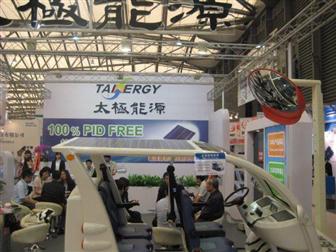Commentary:Non-FIT business model to pave way for grid parity Nuying Huang,Taipei;Jackie Chang,DIGITIMES[Monday 15 October 2012]The continuous feed-in-tariff(FIT)cuts by Europe's governments and increasing trade barriers have been pushing the solar market into suffocation.The price fall seems never ending.A number of firms have exited the market,which will speed up the process of moving the industry from low-FIT to non-FIT as grid parity nears.Firms that have survived the storm anticipate price to rebound,but there may be more firms exiting the market before this happens.
Low-FIT to non-FIT
Financial institutions have been waiting for the industry to show any signs of rebound.However,due to the fact that the solar industry has been built on government subsidies such as feed-in-tariff(FIT),the continuous incentive cuts mean there is nearly no profit to be made from solar PV systems.Hence,demand has been low.In addition,emerging markets that do not have FIT are highly complicated due to local political and business relations and legal restrictions.The solar industry has become a"no hope"industry.
On the other hand,Europe markets that have been practicing FIT policies for some time have been locating new opportunities as they rapidly move toward non-FIT from low-FIT.The year 2013 has been seen as a crucial year as some international system firms will begin to introduce non-FIT business models.This is likely to push markets closer towards grid parity and spark significant demand.
The key to the new business model is to emphasize the"energy-saving"quality of solar PV systems instead of"profitability".
Solar firms noted that the current low price of solar cell is around US$0.35/watt,and for solar modules,the current low price is around EUR0.50/watt(US$0.64/watt).Using the current incentive scheme in Germany,for large-size commercial rooftop solar PV system owners that have system larger than 1MW and smaller than 10MW,the total installation cost is around EUR1 million.If 100%of power generated has been sold back to the government at the rate of EUR0.128/watt,the system can obtain a total of EUR2.56 million in 20 years,.
For rooftop solar PV systems that are smaller than 1MW,only 90%of power generated can be sold back to the government while 10%of power generated is for self-use.Using the cost structure aforementioned,the system can generate power equivalent to EUR2.304 million in 20 years.Adding the cost saved from not using conventional electricity,which is about EUR25,000 per year,and a total of EUR500,000 in 20 years,a total of EUR2.804 million can be generated from the system.This method is more profitable than selling 100%power generated back to the government.The emphasis on saving costs is the key to higher internal rate of return(IRR).
Solar firms added that many customers in Europe have been demanding system firms increase the percentage of self-use electricity in the systems.Also,most residents use less power than the power generated by the system,hence smart grid has been gaining popularity in Germany,especially for the storage feature.
As the price of conventional electricity continues to rise,energy-and cost-saving characteristics of solar PV systems are expected to see increasing popularity.
New market,less players
The biggest challenge of the new business model comes from financing.Europe-based banks have been familiar with FIT business models and have been using government FIT to calculate loan interest.Financial institutions need to find new formulas to calculate loan interests without government FIT and reassess risks such as bankability of owners and EPC(engineering,procurement&construction)firms.
According to Europe-based solar firms,the government in Germany has been eager to discuss with banks and play a central role.In addition,the Germany government commands traditional power plants to combine grid with independent solar PV power-generation plants.This is beneficial for non-FIT system firms that hope to enter the industrial power-generation market.
On the other hand,the low price of solar products has been causing upstream firms to suffer losses for seven consecutive quarters.As grid parity nears,a number of solar firms will be exiting the market.There are other uncertainties such as trade barriers which can push back the coming of grid parity.

Continuous drop of FIT creates new business models for solar PV system firms
Photo:Digitimes file photo





